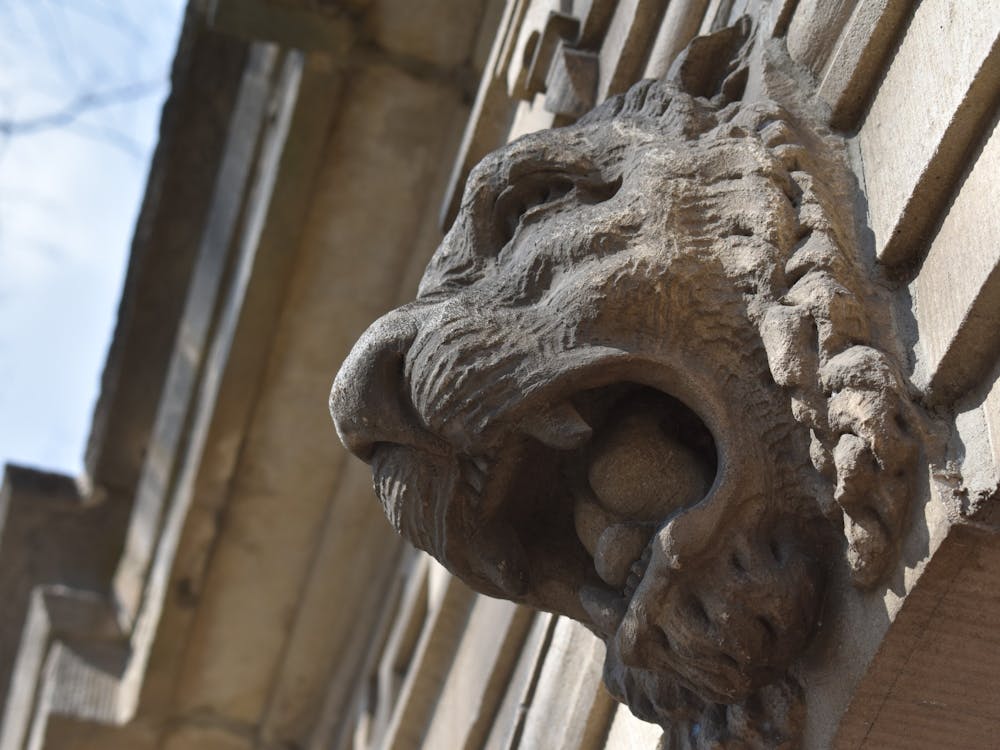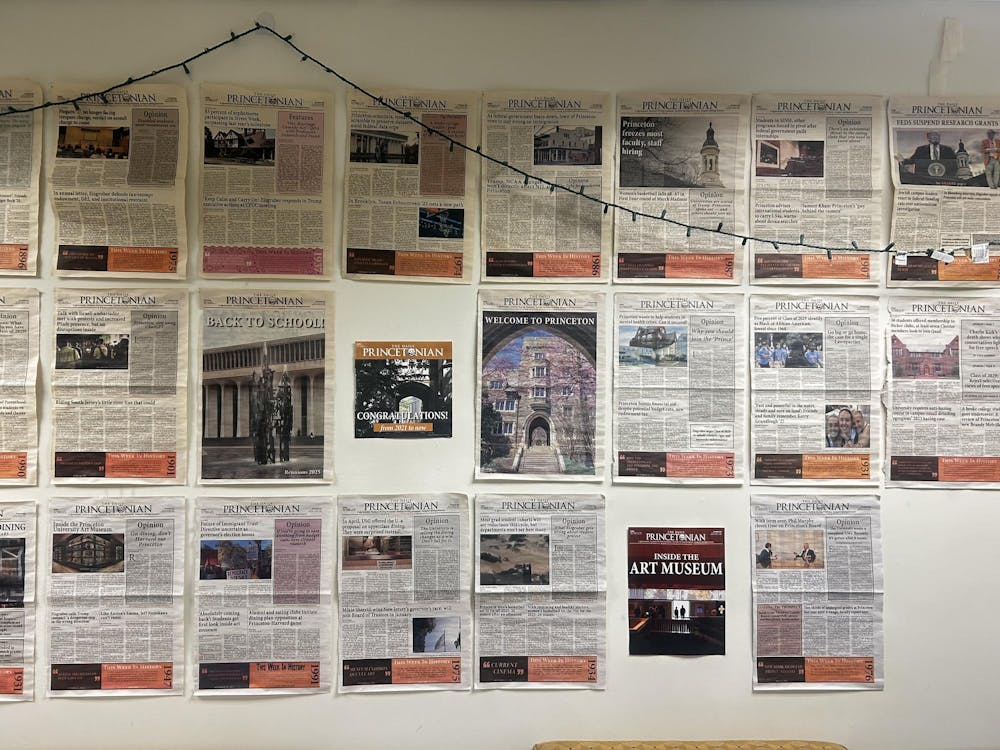Currently, it’s impossible to walk around campus without encountering one of the over eleven ongoing construction projects in the area — such as the University Art Museum, the demolition of First College, renovations near Frist Campus Center, and an overhaul of Whitman College’s heating system. While some construction is necessary to campus infrastructure and development, the scale and number of the projects have transformed Princeton into an active construction zone. Altogether, the current state of campus creates a sense of administrative deprioritization of student comfort and wellbeing.
The catalyst behind the majority of the construction projects is Princeton’s commitment to creating a net-zero campus and expanding the student body. While the University is expanding and becoming more sustainable, these endeavors are not worth sacrificing the community’s wellbeing. Instead of doing whatever it takes to fulfill its tight timeline, Princeton should focus on prioritizing the needs of its present community, including minimizing the impact of construction and investing in accessible, community-friendly spaces that can coexist with construction efforts.
Right now, most students are dissatisfied and frustrated about the prevalence of construction because it reshapes how students move through campus every day. Most prominently, construction efforts severely impact campus circulation and walkability: the path obstructions and sidewalk diversions, in particular, have harmful accessibility and safety implications. Students are constantly facing new construction detours to classes and dining halls, causing frustration and wasting time. Walkways around construction are often narrow and lack nearby shaded seating or require sharp turns or inclines — all features that can hinder access to some wheelchair-users or disabled individuals.
Near Frist, confusing or inefficient sidewalk diversions force some students to walk on the road, putting themselves and drivers at risk. In a survey I sent to all residential college listservs, 96.8 percent of 154 respondents have been negatively impacted by pedestrian detours. One first-year wrote that “I feel like every day there is another path closure to make my walk to class a lot harder.” Several other students noted that the detours cause “ongoing discomfort and frustration” and show “lack of consideration for overall student life.”
These detours have transformed campus, and the University is transparently aware of their impact: the construction website’s constantly updating lists and maps, the TigerSafe app, and text alerts are all examples. However, most students aren’t aware of how to find this information. 72.3 percent of students surveyed said they weren’t aware of how to find updated information on campus detours, and 83 percent said they weren’t regularly informed of changes.
Alongside its impact on campus circulation, construction also causes noise and air pollution that have significant adverse impacts on students’ daily lives. Over 50 percent of housing this year is next to construction, causing most students to be heavily affected by noise and air pollution every day. Areas near construction sites are plagued by foul smells, particulate residue in the air, and loud noises. The survey reported that 68.8 percent of respondents have been impacted by noise pollution and 50.6 percent by air pollution.
These adverse impacts are all counterproductive to the University’s established campus mobility principles, which are the justification for construction in the first place. These goals include making the University an “easy, safe place to walk and move around,” and designing for pedestrians and bikes while prioritizing accessibility and net-zero emissions. Many community members are supportive of these goals: a first-year wrote in my survey that Princeton “isn’t afraid to reinvent itself over again and again,” while a sophomore wrote that, “[Construction is] for a good cause; we have to improve old buildings and environmentally wasteful pipe systems eventually.”
However, in the process of transforming campus to align with its future expansion goals, Princeton is actually making things worse for its current occupants. True adherence to its campus mobility principles would mean that the University prioritizes a usable campus for its current residents, not just future students.

It’s also important to reflect on how construction takes away from our community beneath the surface. Waking up to construction noises isn’t simply a drain on students’ mental energy and health, it also sends the message that students’ daily well-being is deprioritized over finishing construction as soon as possible. Similarly, Whitman’s front lawn construction isn’t simply an eyesore; it also blocks access to a public space students used to use for community bonding, picnicking, and relaxing.
One sophomore wrote that, “It feels as if my college experience is being glossed over for the ‘greater good’ because future students will get … to experience a clean and new campus. Meanwhile, I'm stuck walking around on an inaccessible and messy campus.” Nowadays, it feels as though Princeton is being inhabited by its future students rather than its present community.
In order to mitigate the impact of the construction on students’ lives, Princeton needs to implement temporary and permanent adaptations to its policies and infrastructure. In the shorter term, the University should pursue more effective information dissemination on pedestrian detours and construction schedules, adapt construction times to reflect student needs, and pause construction completely during exam periods. In the longer term, Princeton should seek student input on minimizing the impact of its expansion plan. This involves implementing a two-way channel of communication between students and the University to encourage student input on community needs and complaints regarding changing campus features and construction projects. This could be executed through USG town hall initiatives or email surveys. Either way, students deserve a voice in deciding major changes to our campus in the coming months and years.
Additionally, Princeton must physically redesign its construction accommodations to prioritize pedestrian needs. This includes integrating climate-appropriate and accessible design features that can coexist with construction projects. For instance, many construction path diversions are not well-lit and suffer from surfacing problems that allow puddles and mud to collect. The University should look into implementing all-weather design elements for walkways, including paths resistant to rain, wind, and snow. This also includes accessibility features, such as establishing more shaded seating areas near walkways.

According to a Nov. 1 email, the University has already stated its commitment to increasing lighting on campus, but it needs to install temporary safety lights and cameras along construction diversions. Other areas of campus would also benefit from the accessibility and safety of increased lighting, such as the Poe Field path to Yeh and NCW. Additionally, construction path diversions have also drawn attention to the hazards of combined pedestrian-cyclist lanes; cramped and winding paths through construction prevent effective and safe campus circulation when pedestrians, cyclists, and people on motorized scooters all occupy the same space.
Overall, Princeton’s construction projects have created immeasurable disruptions to student life and the campus community. Especially considering plans to increase construction in the coming years, it is critical for the University to adapt its campus development strategies and preserve the welfare of its current community.
Tara Shukla is a sophomore from Highland Park, N.J., studying computer science and economics. Tara can be reached at ts6796@princeton.edu.








